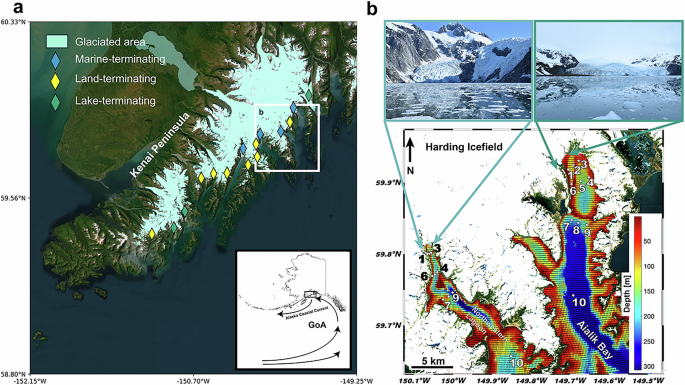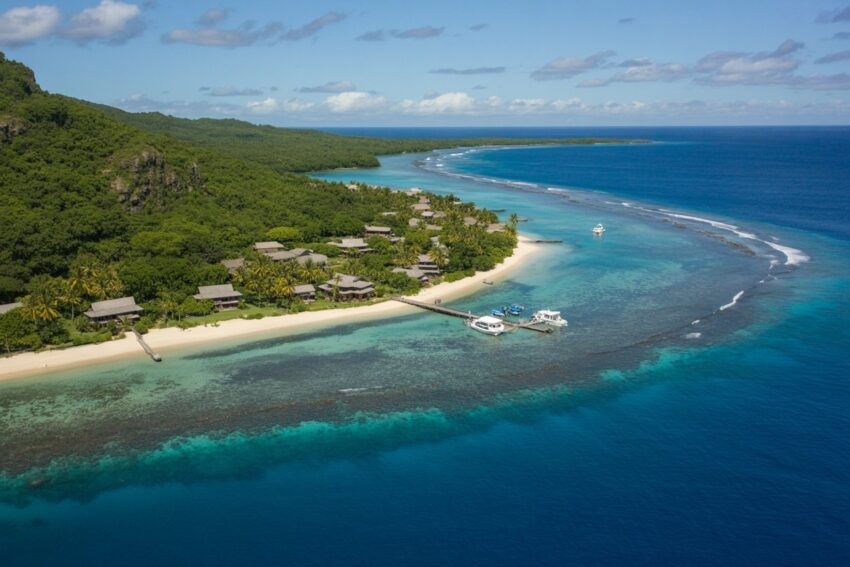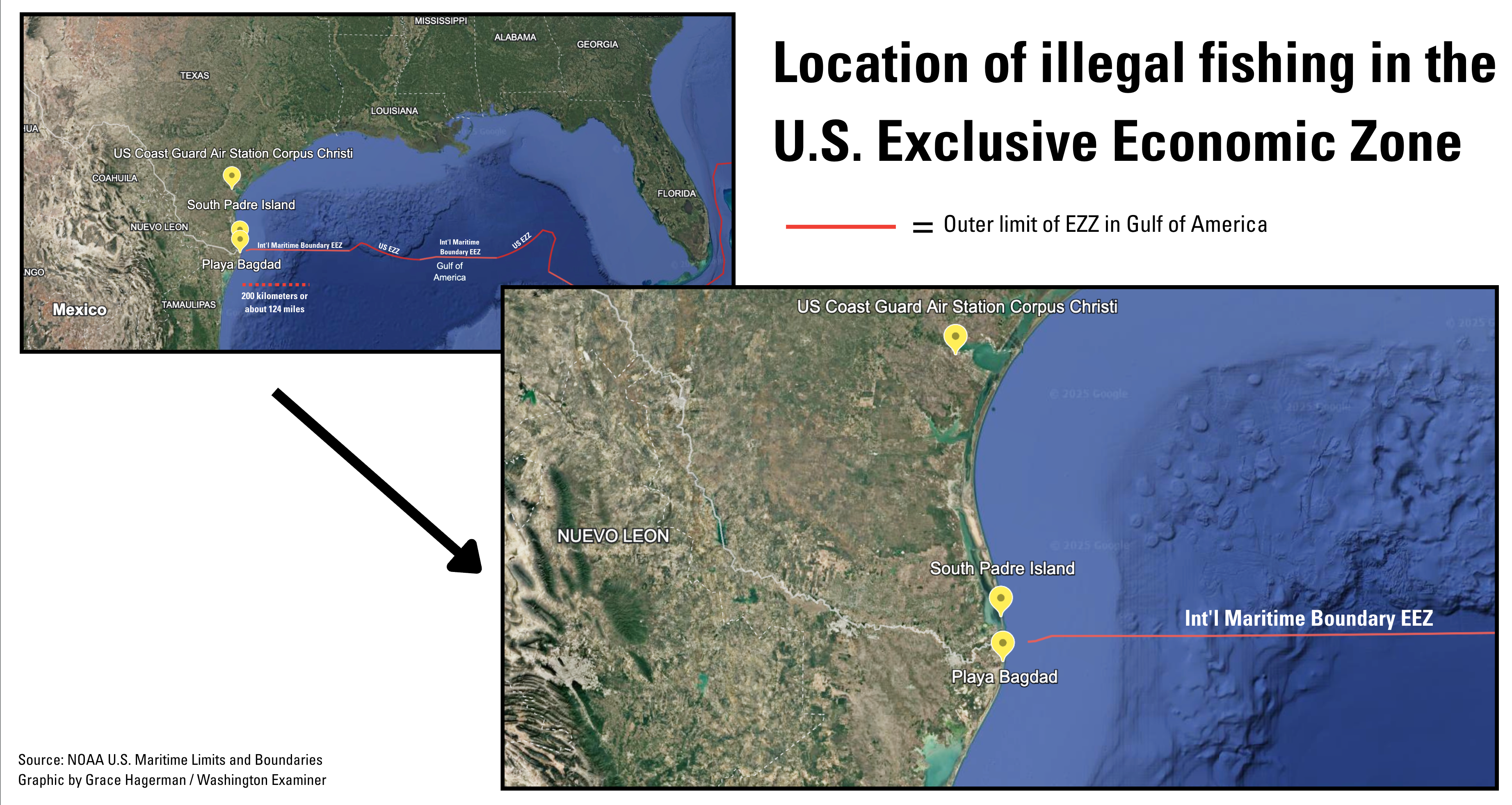Executive Summary
This report details a study on the impact of tidewater glacier retreat on coastal marine ecosystems, with a direct focus on United Nations Sustainable Development Goals (SDGs), particularly SDG 13 (Climate Action) and SDG 14 (Life Below Water). The research investigated how sediments from glacial meltwater in Southcentral Alaska contribute trace-metal micronutrients to coastal microbial communities. By comparing a stable glacier (Aialik Glacier) with a rapidly retreating glacier (Northwestern Glacier), the study found that the glacier’s retreat status is a primary driver of the chemical lability (i.e., potential bioavailability) of iron and manganese. Sediments from the rapidly retreating glacier exhibited distinctly lower metal lability, a consequence of enhanced chemical weathering and altered sediment transport dynamics. These findings are critical for understanding how climate change impacts ocean fertilization and biogeochemical cycles, providing vital data for managing marine ecosystems and interpreting climate history as mandated by the SDGs.
Introduction: Glacial Retreat and Sustainable Development Goals
The global retreat of tidewater glaciers is a significant manifestation of climate change, directly addressing the urgency of SDG 13 (Climate Action). This process not only contributes to sea-level rise but also profoundly disturbs marine ecosystems, a core concern of SDG 14 (Life Below Water). Glacial meltwater acts as a crucial vector, transporting essential micronutrients from land to the ocean. However, the quality and quantity of these nutrients are changing as glaciers degrade, with significant implications for marine primary productivity.
Context: Climate Change and Cryospheric Impact (SDG 13)
The study focuses on the temperate coastline of Southcentral Alaska, a region experiencing rapid environmental shifts due to global warming. The ‘tidewater-glacier cycle’ (TGC)—a natural pattern of advance and retreat—is being accelerated and altered by climate change. Understanding how different stages of this cycle affect sediment and nutrient fluxes is essential for predicting the future consequences of climate change on interconnected Earth systems.
- Most tidewater glaciers globally are retreating due to climate change, impacting sea levels and marine ecosystems.
- This study contrasts two Alaskan glaciers at different stages of retreat to isolate the effects of climate-driven degradation.
- The research provides a framework for monitoring the geochemical consequences of cryospheric response to climate change, supporting the targets of SDG 13.
Link to Marine Ecosystems (SDG 14)
The delivery of trace metals like iron (Fe) and manganese (Mn) from glaciers is critical for fertilizing coastal oceans, particularly in micronutrient-poor regions like the Gulf of Alaska. These elements support phytoplankton, the base of the marine food web. Changes in the bioavailability of these metals can, therefore, cascade through the entire ecosystem, affecting marine biodiversity and the sustainability of fisheries. This research directly investigates the mechanisms controlling this nutrient supply, providing crucial insights for the conservation and sustainable use of marine resources as outlined in SDG 14.
Key Findings: Geochemical Analysis of Alaskan Fjords
The study analyzed dissolved and particulate matter from two geomorphologically distinct fjords in the Kenai Peninsula, each fed by a tidewater glacier at a different stage of retreat.
Study Design and Methodology
- Aialik Glacier (AG): Represents a stable tidewater configuration, providing a baseline for a system in relative equilibrium.
- Northwestern Glacier (NWG): Represents a rapidly retreating configuration, exemplifying a system in transition due to significant recent ice mass loss.
- Analysis: A chemical extraction method was used to determine the labile (bioavailable) fraction of trace metals in suspended sediment plumes and iceberg-laden particulate matter. This approach isolates the most environmentally reactive and biologically relevant components.
Dissolved and Particulate Matter Analysis
Significant differences were observed in the geochemistry of the two fjord systems, reflecting their distinct glacial dynamics.
- Higher Weathering Intensity at NWG: The retreating glacier system (NWG) showed higher concentrations of dissolved silica (dSi), dissolved iron (dFe), and dissolved manganese (dMn). This indicates more intense chemical weathering and longer residence times for meltwater interacting with subglacial sediments.
- Higher Sediment Load at NWG: Surface water concentrations of total particulate aluminum (a tracer for terrigenous input) were nearly twice as high in the NWG fjord, suggesting that retreating glaciers can mobilize and transport greater quantities of sediment.
- Nutrient Distribution: The distribution of macronutrients (nitrate, phosphate) was influenced by fjord circulation and meltwater plumes, highlighting the complex interplay of physical and chemical processes that support marine life (SDG 14).
Impact of Glacier Retreat Status on Metal Lability
The central finding of the report is that the stage of glacial retreat directly controls the chemical quality of the sediments delivered to the ocean.
- Higher Lability in Stable System (AG): Particulate matter from the stable Aialik Glacier was systematically more enriched in labile Fe and Mn. This suggests that freshly eroded, reactive minerals are being directly transported to the fjord, providing a potent source of bioavailable micronutrients.
- Lower Lability in Retreating System (NWG): Particulate matter from the retreating Northwestern Glacier had a significantly lower fraction of labile Fe and Mn. This indicates that the sediments being transported have been stored subglacially for longer periods, undergoing extensive chemical weathering that leaches away the more reactive components.
Discussion: Implications for Sustainable Development
The findings demonstrate that as climate change accelerates glacial retreat (SDG 13), the nature of land-ocean nutrient fluxes will be fundamentally altered, with profound implications for marine ecosystems (SDG 14).
Ocean Fertilization and Marine Biodiversity (SDG 14)
The study reveals a critical shift in the fertilizing potential of glacial runoff. While retreating glaciers may initially increase the total volume of sediment and dissolved metals, the particulate fraction becomes less chemically labile and thus less effective as a source of bioavailable micronutrients. This could lead to:
- A reduction in primary productivity in coastal zones that rely on glacial nutrient inputs.
- Shifts in phytoplankton community structure, favoring species adapted to different nutrient conditions.
- Potential negative impacts on higher trophic levels, including fisheries, which depend on a productive marine food web.
This highlights the need for integrated management strategies that account for the changing biogeochemistry of coastal waters to achieve the goals of SDG 14.
Monitoring Climate Change Impacts (SDG 13)
The geochemical signatures identified in this report—such as elemental ratios (e.g., Al/Ti, Fe/Al) and the labile fraction of metals—can serve as powerful proxies for tracking the progression of glacial retreat and its environmental impact. Fjord sediment archives can be re-evaluated in this context to reconstruct past changes in glacial dynamics and their relationship to climate, thereby improving predictive models. This work contributes directly to the scientific knowledge base required to strengthen resilience and adaptive capacity to climate-related hazards, a key target of SDG 13.
Conclusion and Recommendations
This report concludes that the advance-retreat cycle of tidewater glaciers, which is heavily influenced by climate change, is a first-order control on the geochemistry of sediments delivered to the coastal ocean. The transition from a stable to a retreating glacial state leads to a decrease in the lability of essential micronutrients like iron and manganese, potentially reducing the capacity of glacial runoff to fertilize marine ecosystems.
These findings underscore the interconnectedness of the climate system (SDG 13) and marine biodiversity (SDG 14). As glaciers worldwide continue to retreat, the long-term impact on coastal productivity may be more complex than previously understood. It is recommended that future research and monitoring efforts focus on:
- Expanding geochemical sampling to a wider range of glacial systems to validate these findings on a larger scale.
- Integrating these geochemical insights into ecosystem models to better predict the future of primary productivity in high-latitude marine environments.
- Using these findings to inform international climate policy and marine conservation strategies, ensuring that the critical link between the cryosphere and ocean health is recognized in efforts to achieve the Sustainable Development Goals.
Analysis of Sustainable Development Goals (SDGs) in the Article
1. Which SDGs are addressed or connected to the issues highlighted in the article?
The article primarily addresses issues related to two Sustainable Development Goals:
-
SDG 13: Climate Action
The article directly links the observed phenomena to climate change. It states, “Most tidewater glaciers around the world are retreating due to global climate change and are predicted to continue to retreat.” The entire study is framed around understanding the geochemical consequences of this climate-driven retreat, making SDG 13 a central theme.
-
SDG 14: Life Below Water
The core of the research focuses on the impact of glacial processes on marine environments. The article investigates how sediments and trace metals from melting glaciers act as “important sources of trace-metal micronutrients for coastal microbial communities, linking cryospheric processes with ocean fertilization and biogeochemical cycles.” It examines the potential “disturbance of marine ecosystems” and how glacier retreat “alters downstream fjord ecosystem structure and function,” which are key concerns of SDG 14.
2. What specific targets under those SDGs can be identified based on the article’s content?
Based on the article’s focus, the following specific SDG targets can be identified:
-
Under SDG 13: Climate Action
-
Target 13.1: Strengthen resilience and adaptive capacity to climate-related hazards and natural disasters in all countries.
The article investigates the effects of glacier retreat, a direct climate-related hazard. By providing a detailed understanding of how these changes impact fjord geochemistry and coastal ecosystems, the research contributes essential knowledge needed to anticipate future changes and build adaptive strategies for managing these vulnerable environments.
-
-
Under SDG 14: Life Below Water
-
Target 14.1: By 2025, prevent and significantly reduce marine pollution of all kinds, in particular from land-based activities, including marine debris and nutrient pollution.
The study quantifies the flux of materials from a land-based source (glaciers) into the coastal ocean. It analyzes the “sediment fluxes” and the delivery of “dissolved trace-metal micronutrients (iron (Fe), manganese (Mn))” from glacial meltwaters. This directly relates to understanding and monitoring inputs from land-based activities that alter the chemical composition of marine waters.
-
Target 14.2: By 2020, sustainably manage and protect marine and coastal ecosystems to avoid significant adverse impacts, including by strengthening their resilience, and take action for their restoration in order to achieve healthy and productive oceans.
The research directly examines how glacier retreat and associated meltwater discharge can lead to “disturbance of marine ecosystems” and “adversely affect coastal marine microbial communities.” By comparing a stable glacier (Aialik Glacier) with a rapidly retreating one (Northwestern Glacier), the study provides insights into the significant adverse impacts on fjord ecosystems, which is crucial for their protection and management.
-
Target 14.a: Increase scientific knowledge, develop research capacity and transfer marine technology… in order to improve ocean health and to enhance the contribution of marine biodiversity to the development of developing countries.
This entire article is a contribution to scientific knowledge. It addresses a gap in understanding by exploring how the “stage of the TGC [tidewater-glacier cycle] affects the geochemistry of particulate matter transported to the coastal ocean.” The methods and findings enhance the research capacity for studying cryosphere-ocean interactions and their impact on marine health.
-
3. Are there any indicators mentioned or implied in the article that can be used to measure progress towards the identified targets?
The article does not mention official SDG indicators, but it is fundamentally based on measuring scientific indicators that can be used to track the environmental changes relevant to the identified targets.
-
Indicators for SDG 13 (Climate Action)
- Rate of glacier retreat and mass loss: The article uses glacier retreat as a primary indicator of climate change impact. It provides specific data, such as the Northwestern Glacier (NWG) experiencing a “net loss of 1.63 km² in the 1990s, which equates to a −1.59 km retreat of the terminus.” This serves as a direct measure of the physical response to climate warming.
- Volume of meltwater discharge: The study references “increased meltwater inputs” and uses “satellite-based estimates of volume flux” (e.g., “AG has a glacial flux of 0.33 km³/yr”) as an indicator of the hydrological response to climate change.
-
Indicators for SDG 14 (Life Below Water)
- Concentration of trace metals and nutrients in seawater: The study’s methodology is centered on measuring the concentrations of dissolved and particulate trace metals (Fe, Mn) and macronutrients (Nitrate, Phosphate, Silicic acid) in fjord waters. For example, it reports “dFe concentrations in surface waters from AG ranged from 7 to 95 nM.” These measurements serve as direct indicators of the chemical state of the coastal ecosystem and the level of nutrient input from land.
- Sediment flux and concentration: The article measures “total particulate Al” as a proxy for sediment load, finding that “NWG produces more sediment than AG as average fjord surface concentrations are nearly twice as high.” This is a key indicator for quantifying land-based inputs into the marine environment (Target 14.1).
- Chemical lability of particulate matter: A novel indicator used in the study is the “fraction of labile trace-metals,” which assesses the bioavailability of nutrients. The finding that “Fe and Mn had higher fractions of TMlabile in AG… compared to NWG” provides a sophisticated measure of how ecosystem fertilization potential changes with the state of the glacier, which is relevant for assessing ecosystem health (Target 14.2).
4. Table of SDGs, Targets, and Indicators
| SDGs | Targets | Indicators Identified in the Article |
|---|---|---|
| SDG 13: Climate Action | 13.1: Strengthen resilience and adaptive capacity to climate-related hazards. |
|
| SDG 14: Life Below Water | 14.1: Prevent and reduce marine pollution from land-based activities. |
|
| 14.2: Protect and restore marine and coastal ecosystems. |
|
|
| 14.a: Increase scientific knowledge and research capacity. |
|
Source: nature.com







